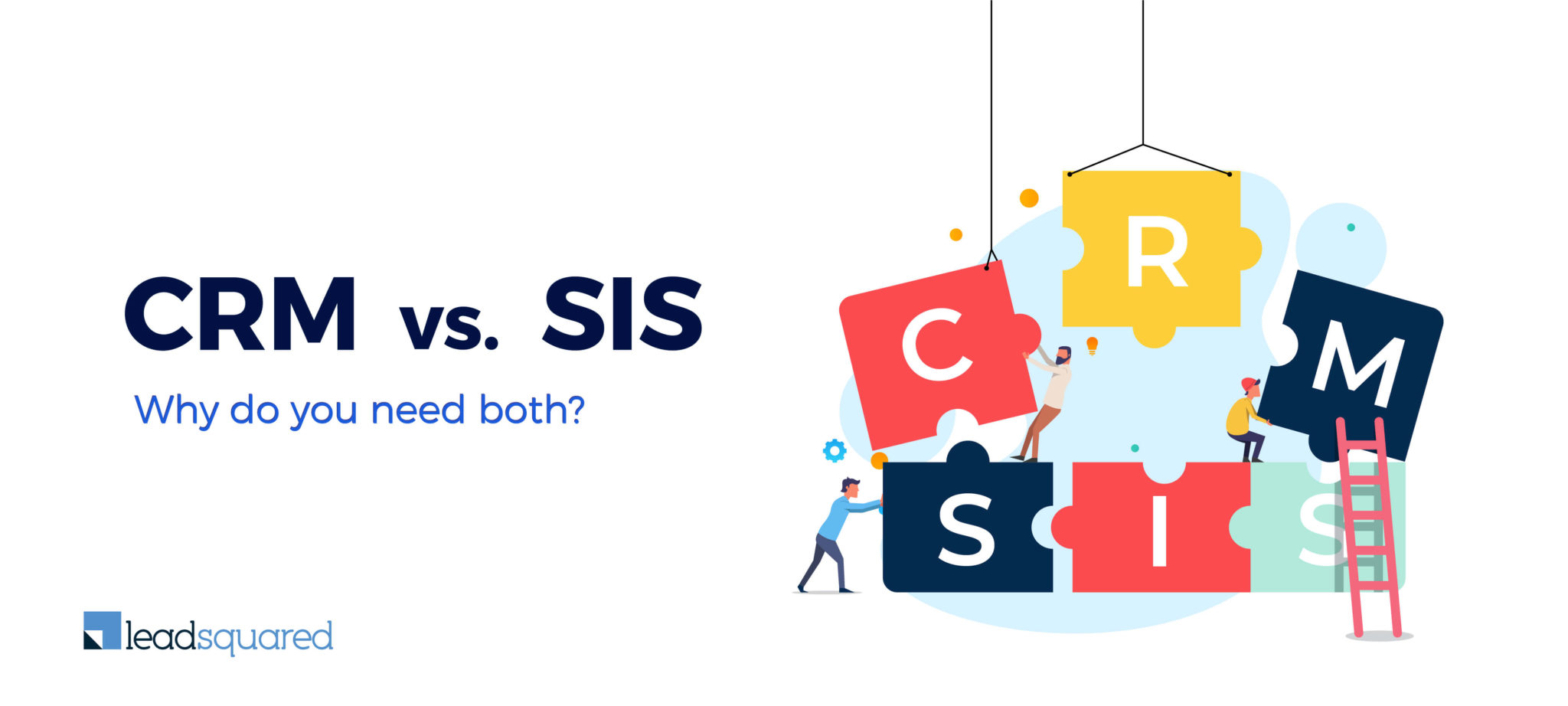
To keep operations streamlined, many higher education institutions already rely on student information systems, also known as SIS (Student Information System). However, more and more trade schools and universities are starting to realize the benefits of CRM (Customer Relationship Management).
Once a CRM is implemented, it collaborates with the admissions suite, thus becoming the focal point of institution operations. It assists in driving admissions and enrollments for the higher education industry via a streamlined and targeted approach.
But when it comes down to the question of opting for CRM versus SIS, the answer is both – one software system simply can’t perform the duties of both. In this case, the SIS can analyze different metrics and works with data-specific communication. On the other hand, CRM systems increase brand communication, track engagement and stakeholder activity, and measure ROI.
Universities can adopt a CRM without letting go of their SIS, but only if both can integrate and are compatible, which is achieved by a modern multi-functional CRM.
The Outdated SIS
Most SISs run on outdated technology, making it difficult to connect them with different CRMs. Very few systems provide the flexibility of connecting via APIs and Webhooks. This implies that information from one system can’t migrate to the other without proper integration.
Lead Tracking in SIS
With SIS, it’s a difficult task to determine lead sources or where inquiries are coming from. This makes it challenging to develop a strategy based on current needs. You can check out another blog to know more about what is lead tracking.
Unavailability of Workflows in SIS
SIS doesn’t offer workflows and only allows email campaigns. Workflows are a setup that allows admissions departments to streamline a student’s admission journey.
With a workflow, you can develop a logical path which describes how the lead developed over time. Take a CRM like LeadSquared (try it for free) for instance, in which automation begins whenever a new lead is created. This triggers the event ‘New Lead’, after which it automatically waits for 5 minutes and sends an email, welcoming the potential enrollment.
If the email is opened, it takes further action based on their interest level. On the other hand, if the lead doesn’t open the email, it waits for a day before sending an SMS.
Lead Capture
SIS doesn’t allow convenient lead capture activity since its sources are limited to inquiries made on the official website. CRM, on the other hand, can connect with website forums, social media accounts, and even other 3rd party sources.
For example, the SIS will only capture a lead’s activity if they make an inquiry on the website about something like what courses are offered. Comparatively, if this lead asks similar questions on the social media account and student forums, SIS won’t capture it but a CRM can.
Better Lead Prioritization
While SIS does have its merits of organization student data, it doesn’t offer the option of prioritizing leads in a smart way. CRM allows admissions officers to score a lead’s activity, whether they visit a landing page or fill in a form – the higher the score, the bigger the priority. This way, admissions reps can check a lead’s overall score to decide when to mail or call them. You can learn more about higher education CRM – why do you need it.
For instance, a potential enrollment that has made multiple inquiries, filled a form, and even visited the campus is a high-priority lead, and reps can quickly decide, based on their score, whether to send an email or personally call them.

Student Information Transfer Through SIS
CRM wouldn’t prove effective for transferring student information from one campus to another. Let’s say that a student studying at the New York campus moved to the San Jose campus; their course credits, fees, and attendance can be easily migrated within the SIS.
Manage Information about the Curriculum and Enrolled Students with SIS
With SIS, higher education institutions can manage metrics like how many students are taking a course, how many have paid for a course, timings, and other curriculum-related information. In contrast, CRM acts as lead management software that helps admissions reps track enrollment.
According to this distinction, CRM handles pre-enrollment activities like lead tracking and prioritization, while SIS manages post-enrollment factors like attendance and course hours.
The Need for Integration between the Two
At this point, it may seem like both the SIS and CRM have their separate tasks, so what was the integration part we were talking about earlier?
We’ll explain with an example like recipients of financial aid. In this scenario, bookkeeping is done via SIS but if any leads make an inquiry and discuss financial aid on the website or with an admissions rep, this data is stored on the CRM.
This calls for an SIS that delivers enough flexibility to connect with the CRM through an API to keep the information intact and manageable. Without this crucial point, admissions reps and the accounting department will have to do a lot of tasks manually by switching between systems.






